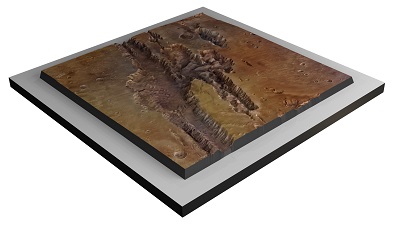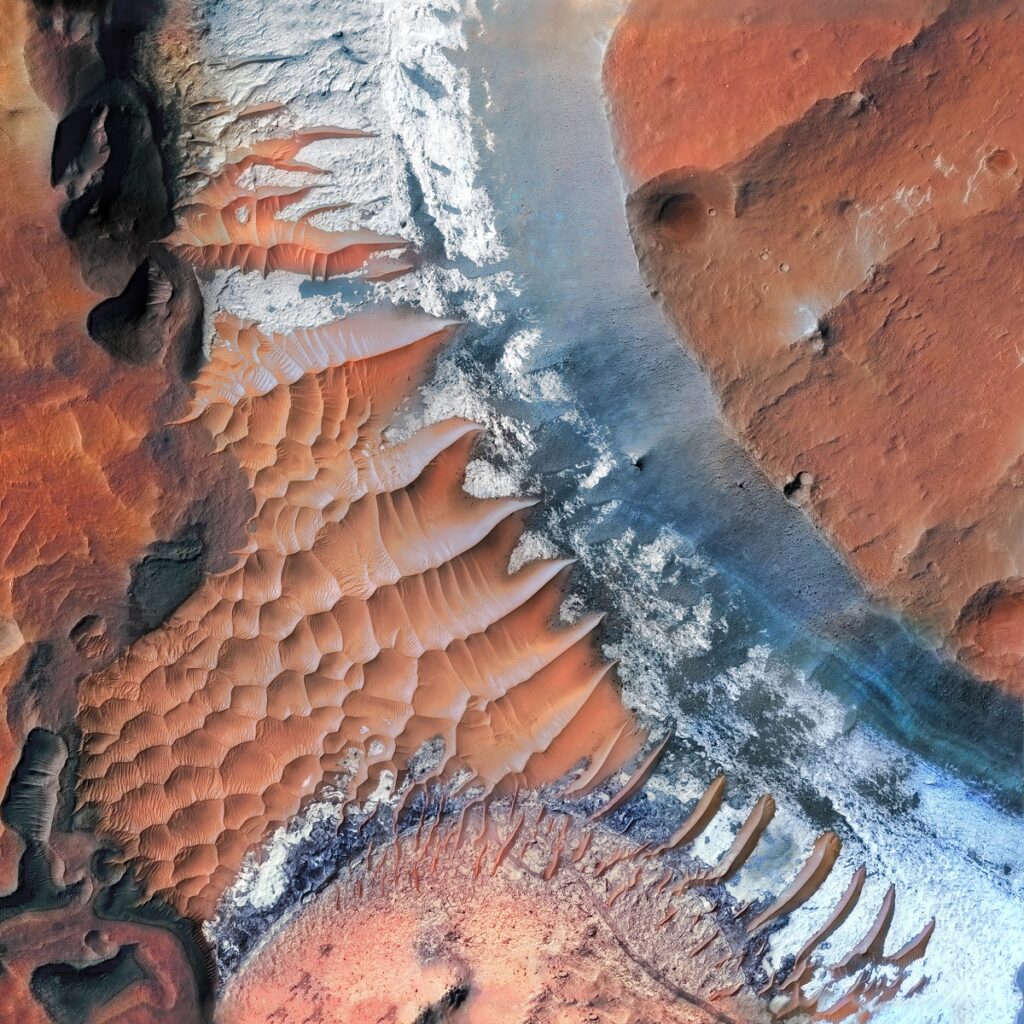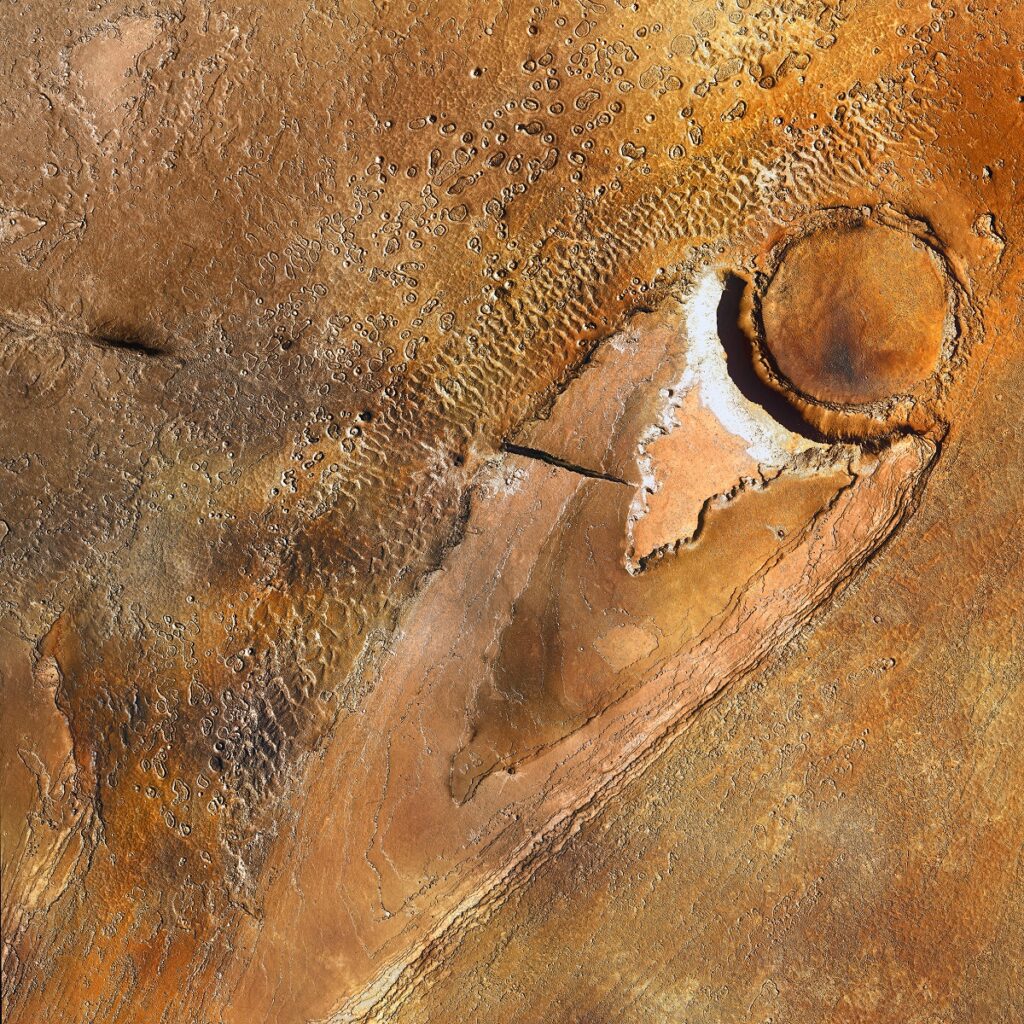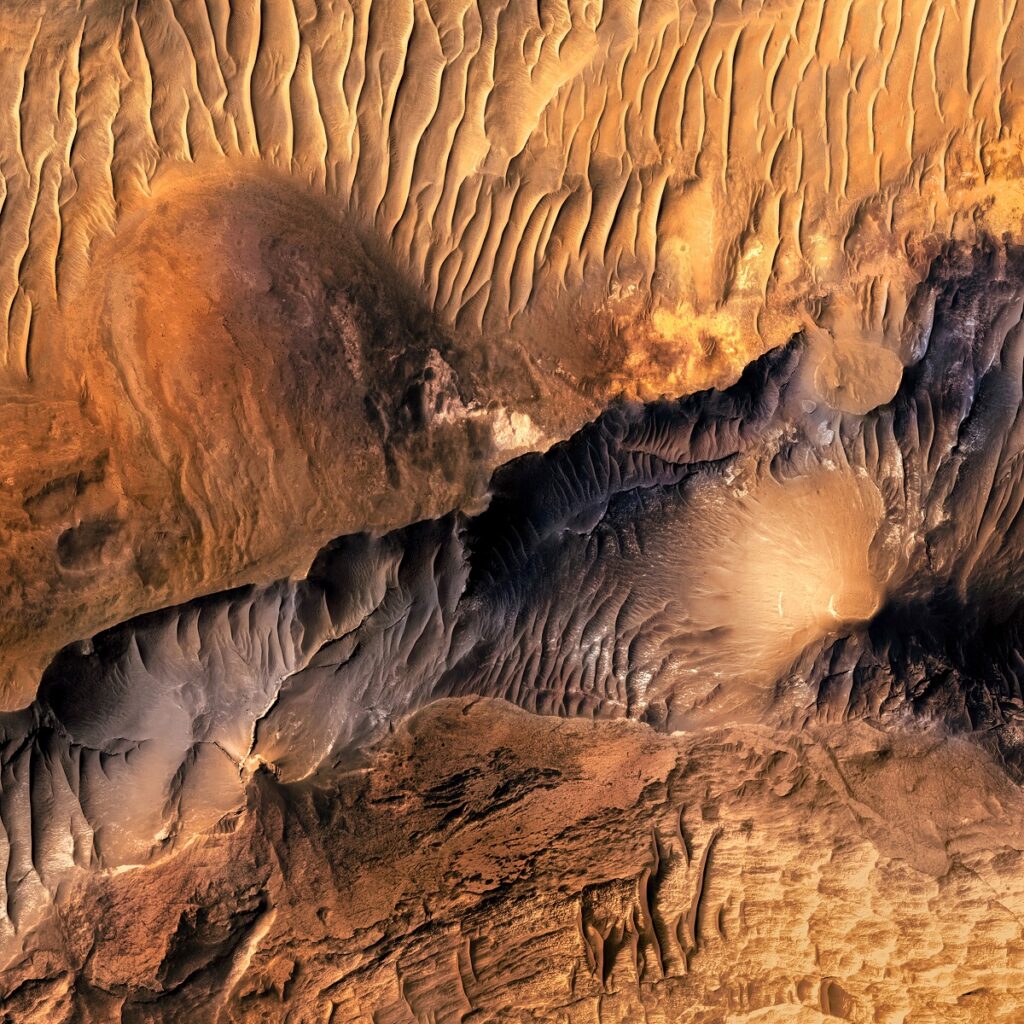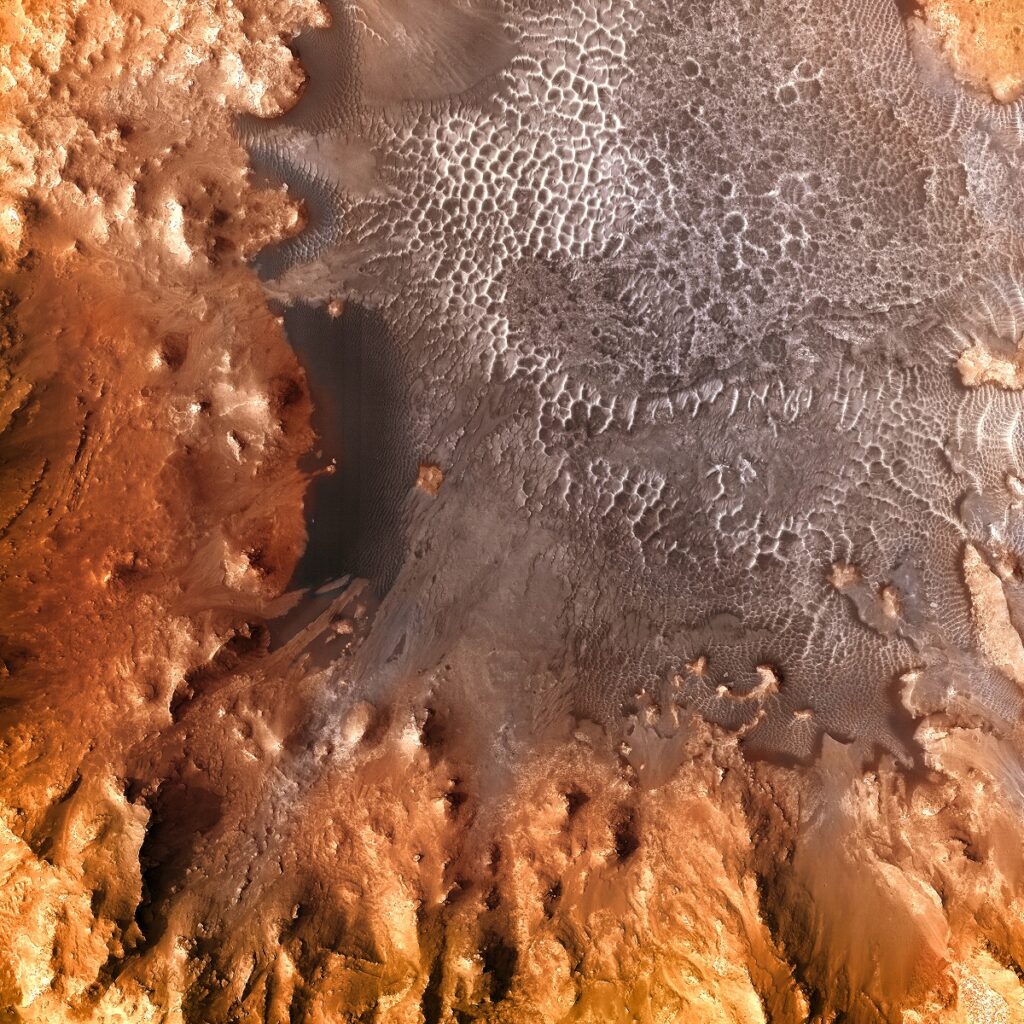Does Mars have Moons?
Does Mars have Moons?
WhiteClouds Builds 3D Marscapes and Canvas Prints
Does Mars have Moons?
Yes, Mars has two small moons named Phobos and Deimos. These moons were discovered in 1877 by American astronomer Asaph Hall. Unlike Earth’s moon, which is spherical and relatively large in comparison to Earth, Mars’ moons are much smaller and irregularly shaped, resembling asteroids more than traditional planetary moons.
Characteristics of Mars’ Moons:
Phobos
- Size: Phobos is the larger of the two moons, with dimensions of about 22.4 km (13.9 miles) by 18.6 km (11.5 miles) by 16.8 km (10.4 miles).
- Orbit: Phobos orbits extremely close to Mars at a distance of about 9,378 km (5,827 miles) from the planet’s surface.
- Orbital Period: It takes just about 7.66 hours for Phobos to complete one orbit around Mars.
- Features: Phobos has a very prominent crater named Stickney, which has a diameter of about 9 km (5.6 miles). The surface of Phobos is covered in a loose, powdery material known as regolith.
Deimos
- Size: Deimos is smaller than Phobos, with dimensions of about 12.4 km (7.7 miles) by 12.2 km (7.5 miles) by 11.4 km (7.1 miles).
- Orbit: Deimos orbits at a distance of about 23,460 km (14,580 miles) from Mars.
- Orbital Period: It takes about 30.3 hours for Deimos to complete an orbit around Mars.
- Features: Deimos has a smoother appearance compared to Phobos and lacks significant features like large craters. Like Phobos, its surface is also covered in regolith.
Theories about the Origin of Mars’ Moons:
Captured Asteroids: One prevalent theory is that both Phobos and Deimos are captured asteroids from the asteroid belt located between Mars and Jupiter.
Mars-Origin Hypothesis: Another theory suggests that these moons were created from debris that was ejected into orbit around Mars following a massive impact event on the planet itself.
Kuiper Belt Objects: Some theories also propose that Phobos and Deimos may be captured objects from the Kuiper Belt, a region beyond Neptune that is filled with small, icy bodies.
Significance and Future Exploration:
Scientific Importance: Understanding these moons can offer insights into Mars itself, the history of the solar system, and even the mechanisms through which moons and planets form.
Exploration Missions: Japan’s space agency, JAXA, is planning a mission called MMX (Martian Moons eXploration) to bring back samples from Phobos in the late 2020s.
Human Exploration: NASA and other space agencies have also considered the potential for sending astronauts to Mars’ moons as a stepping stone for future human exploration of Mars.
Check out our 3D Mars Learning Center for more information on Mars. You can also learn more at: NASA Mars Exploration.
More About Mars
Contact us today to learn more about our 3D services and how we can help you achieve your goals.

